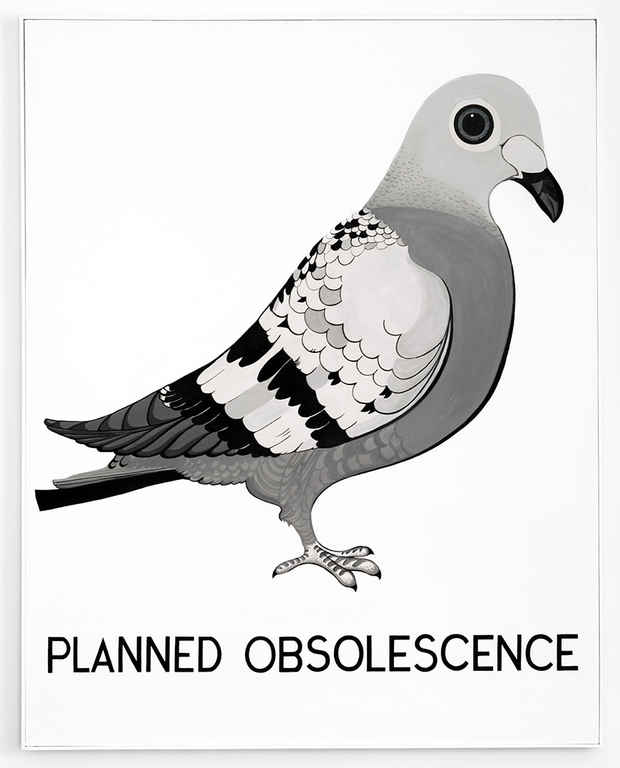Vern Blosum Exhibition
Essex Street

This event has ended.
“Purity” meant self-definition, and the enterprise of self-criticism in the arts became one of self definition with a vengeance.(1)
In the year 1961 a young fellow finished his graduate studies in fine art, here in New York City. This fellow still believed in abstract art. A certain story, told by Greenberg, which went from Manet to Mondrian to Pollock was still graspable, even logical. From the Enlightenment to Modernism. It made sense that visual art had arrived at a pure conclusion, one could say it had reached a truth.
Our young fellow was busy painting and exhibiting non-objective abstract paintings. But he also saw the nascent sun on the horizon. He knew Pop was coming. While Lichtenstein, Rosenquist, Warhol and Wesselmann wouldn’t have their first one-man exhibitions until 1962 and Ruscha in 1963, they were already emerging, articulating their individual brands of sign production. Predicting the rise in reproduction, artificiality, surface and the status of the authorial position itself coming into doubt and malleability, in 1961 our young fellow decided to invent a Pop artist. Vern Blosum.
“…the act of mythmaking has been transferred from the subject-matter of the work to the artist himself as the content of his art.”(2)
Blossom, not pop, slower, and more floral. Like Rrose Selavy. Vern Blosum made Pop art. If others in this developing scene were basing their motifs on the printed page, the logo, packaging and advertisement, Vern Blosum was making paintings of dull reproductions and the mechanical in the style of mechanical and dull reproduction. Not fixating on the enthusiastic encouragement of a billboard, or the action of the comic book, but paring down to the simple relation between a pictorial icon and a corresponding written description. Straight from the page of a dictionary or an instruction manual. Banal, everyday, almost an idea and language based artwork. The first works ever made by Vern Blosum were five paintings of flowers, each rendered without any of the movement, vibrancy or scent of nature, more aligned with a field guide, each with a brief, if occasionally witty description below.
What happened next is even more astonishing. A woman named Marilyn, took some of these paintings to a gallery, where else, but Leo Castelli Gallery. And over the next few years Castelli represented Vern Blosum. He sold a painting to the Museum of Modern Art via the discerning and epoch seeking vision of Alfred H. Baar, it was on display in the museum for some years. Burton and Emily Hall Tremaine bought one, as did Ethel and Robert Scull, as did Betty Asher, the art dealer and mother of Michael Asher. And Blosum exhibited as well. He was included in the Popular Image Exhibition at the Washington Gallery of Art in DC, and in the exhibition Mixed Media and Pop Art at the Albright Knox Gallery in 1963. Lucy Lippard included a reproduction of a Vern Blosum painting in her Pop Art book of 1964.
Yet, as the 1960’s moved on, Alfred H. Baar got suspicious. He did some further research, first with Castelli, apparently the dealer was just as unaware of the artist’s counterfeit identity as the curator. Eventually a request was made with the department of health for a birth certificate. But none was found. And just like that, the painting was taken down from MoMA and put in storage. The intended error, Vern’s flaunting of the ease of production and the art market, was white washed away. The Emperor’s new clothes, were placed back in the closet, where they remained till this day.
How the paintings were found again and returned to public exhibition is another story.
Opening on Sunday September 8th and running until October 15th, ESSEX STREET will be exhibiting 8 paintings from Vern Blosum. His five first paintings of flowers from 1961, his final painting which is a Stop Sign in 1964, and a few discursions along the way. The works are remarkable not just for how they would predict the styles and genres of Warhol, Baldassari, Ruscha and Kosuth, but also the readymade artists of Phillippe Thomas, J. St. Bernard, Reena Spaulings and the like. A number of archival documents, catalogues and research is also available at the gallery for perusal.
[Image: Vern Blosum “Planned Obsolescence” (1963) oil on canvas, 68 x 54 in.]
Media
Schedule
from September 08, 2013 to October 06, 2013
Opening Reception on 2013-09-08 from 18:00 to 20:00